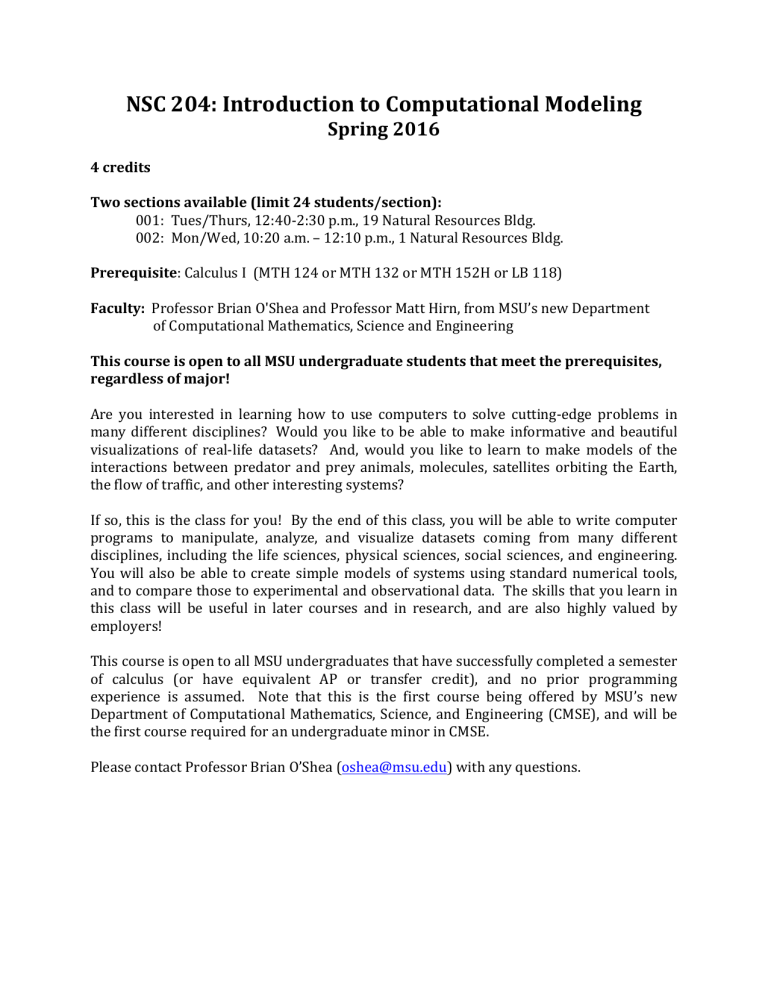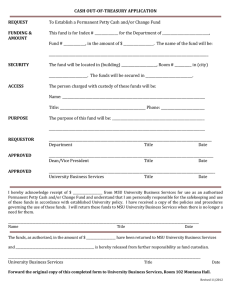NSC 204 - Social Science Data Analytics

NSC 204: Introduction to Computational Modeling
Spring 2016
4 credits
Two sections available (limit 24 students/section):
001: Tues/Thurs, 12:40-‐2:30 p.m., 19 Natural Resources Bldg.
002: Mon/Wed, 10:20 a.m. – 12:10 p.m., 1 Natural Resources Bldg.
Prerequisite : Calculus I (MTH 124 or MTH 132 or MTH 152H or LB 118)
Faculty: Professor Brian O'Shea and Professor Matt Hirn, from MSU’s new Department
of Computational Mathematics, Science and Engineering
This course is open to all MSU undergraduate students that meet the prerequisites,
regardless of major!
Are you interested in learning how to use computers to solve cutting-‐edge problems in many different disciplines? Would you like to be able to make informative and beautiful visualizations of real-‐life datasets? And, would you like to learn to make models of the interactions between predator and prey animals, molecules, satellites orbiting the Earth,
the flow of traffic, and other interesting systems?
If so, this is the class for you! By the end of this class, you will be able to write computer programs to manipulate, analyze, and visualize datasets coming from many different disciplines, including the life sciences, physical sciences, social sciences, and engineering.
You will also be able to create simple models of systems using standard numerical tools, and to compare those to experimental and observational data. The skills that you learn in this class will be useful in later courses and in research, and are also highly valued by
employers!
This course is open to all MSU undergraduates that have successfully completed a semester of calculus (or have equivalent AP or transfer credit), and no prior programming experience is assumed. Note that this is the first course being offered by MSU’s new
Department of Computational Mathematics, Science, and Engineering (CMSE), and will be
the first course required for an undergraduate minor in CMSE.
Please contact Professor Brian O’Shea ( oshea@msu.edu
) with any questions.





